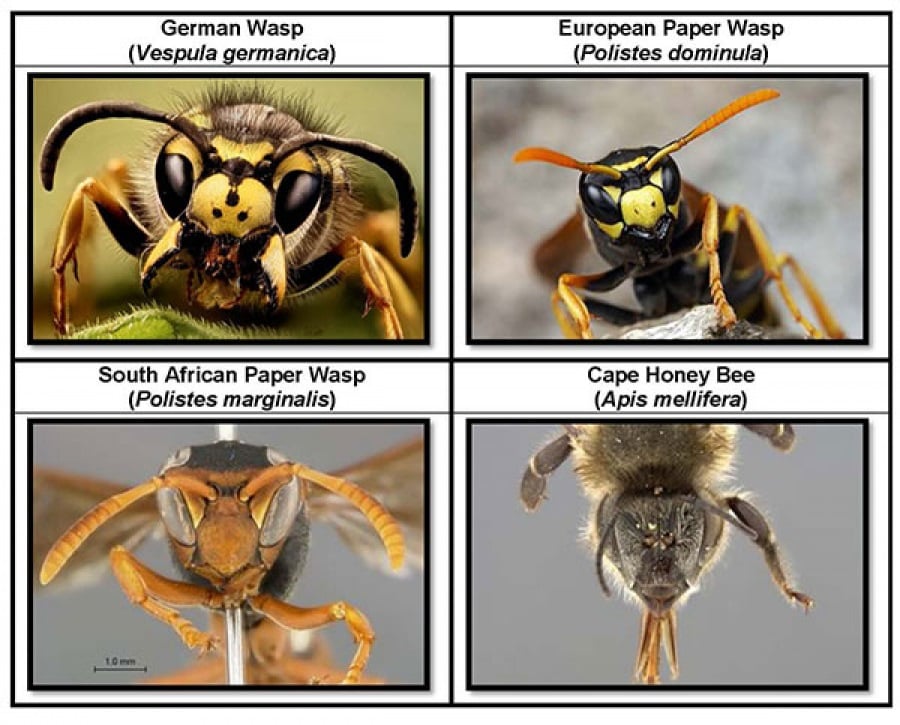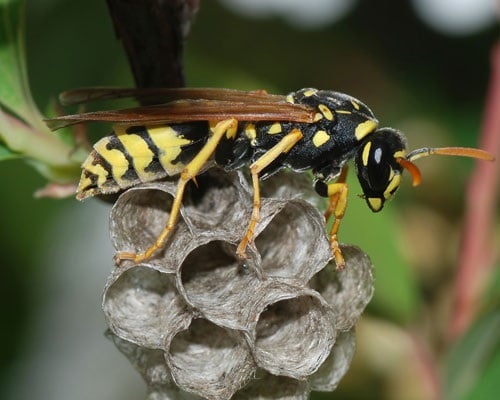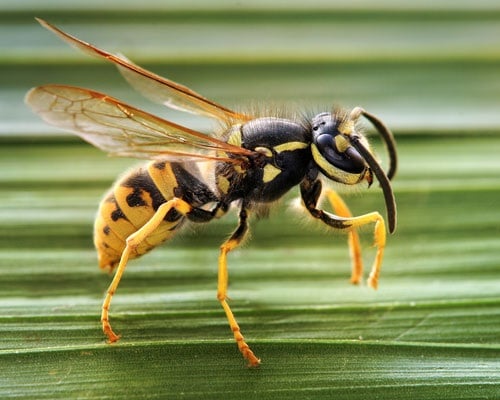Have you seen these wasps? - News24
While the Western Cape may not seem to be embroiled in an international conflict, it is indeed under attack. The aggressors are two invasive species – the German Wasp and the European Paper Wasp – which have progressively been advancing through the province for years.
Last week, the City of Cape Town sent out a plea to residents to report sightings of these yellow-and-black insects, stating that, over the past few months, the City had been battling with an invasion of these wasps.
At the forefront of gathering intel on these invaders is Dr Ruan Veldtman, an entomologist employed by the South African National Biodiversity Institute (Sanbi) since 2006. In 2012, he started the Sanbi Invasive Wasp Project, comprising both the German Wasp and European Paper Wasp.
Two years ago, he moved to the Western Cape Biological Invasions team which is responsible for monitoring and eradicating new invasions in the province.
Together with Dr Derek Daly, an expert on Vespula behavioural ecology from Liverpool, and colleagues at Stellenbosch University, Veldtman is investigating the ecological requirements and genetics of the German Wasp to better understand this species' invasion.
Daly is currently on a two-month visit in the Western Cape during the peak wasp season, which is March to April.
People's Post spoke to these two experts to gain some insight into the wasps' modus operandi.
German Wasps were first detected around Kirstenbosch in 1972. Veldtman says a hibernating queen from Europe probably arrived as a stowaway, either on a ship or on one of those old types of airplanes where the cargo is unpressurised.
The European Paper Wasp was first spotted in Kuils River in 2008.
The conjecture is that it made its way to the area via the shipping yard in Epping, also hidden in cargo or crates.
"You only need one queen to kick everything off," says Veldtman.
At present, these invasive species only occur in the Western Cape and, Veldtman says, we need to keep it that way.
"That is why it is so important to document any new spread and jump dispersals."
Originating from continental Europe, the German Wasp prefers a cooler climate. That is why you will find them in shady areas such as Constantia, Claremont and Hout Bay. Veldtman says, for a long time, the species was confined to cooler areas around Table Mountain but in 2000, they suddenly started popping up all over the Boland.
So far the presence of the wasp has been confirmed in Ceres, Kleinmond and Greyton and it seems pretty likely that Hermanus is their next target.
The European Paper Wasp, on the other hand, prefers hot areas. Veldtman says they are very suited to our climate: dry summers and winter rainfall.
"That is why it went off like a bomb, spreading across the Western Cape," says Veldtman.
The species is currently found in Kirstenbosch, Hout Bay, the Cape Flats, as well as all the way to Somerset-West, the Strand, Wellington and Paarl. Veldtman says there have been some reports of them in Worcester. Smaller towns such as Rawsonville, Grabouw and Porterville have also not been spared.
The European Paper Wasp seems to be having a much larger impact on communities. Veldtman says he gets calls all the time from parents asking what they should do when their kids get stung.
Unless you are allergic to their sting, a hydro cortisol ointment and an antihistamine from your local pharmacy should do the trick, he says.
"The European Paper Wasp forages on lawns for caterpillars. Kids tend to step on them. Or if you disturb their nest, working on your roof, for example, they will sting you. But they are generally not aggressive and they won't chase you. For most people, the sting burns for 15 minutes," he says.
The average European Paper Wasp nest is about the size of a small plate (with about 20 to 200 individuals). An average German Wasp nest is much bigger. Likened to the size of a rugby football, a single German Wasp nest accommodates at least 400 individuals.
As the nest gets bigger, that number can go up to 5 000. And unlike the European Paper Wasp, the German Wasp tends to build their nest inside other objects with only the entrance visible. This makes judging the actual size of the nest difficult.
Veldtman describes the sting of a German Wasp as a more numbing pain with swelling that can persist for up to four days.
"There are fewer German Wasp nests, so your chances of encountering one is lower. But if you do, it presents a bigger risk. It is as dangerous as disturbing a honeybee colony. I am not an specialist on this but I think 200 to 300 wasp stings is the lethal limit for humans," says Veldtman.
Residents and homeowners should not try to remove a German Wasp nest. The City's Invasive Species Unit currently has eight operational teams to assist with removal across Cape Town.
This service is free of charge, however, those who cannot wait for the City's operations team have the option to make use of a professional service provider.
The European Paper Wasp, however, is easier to kill. So if you are a brave soul and willing to do so at your own risk, a can of insect spray should get the job done.
Veldtman says the best time to spray them is early in the morning when temperatures are still low. He says this is also when most of the wasps will be sitting on the nest.
He warns that if you do spray them, especially when the nest is located above your head, you should be careful that they don't rain down on you.
"When they are busy dying, they can still sting you. So if they fall on you, they will."
Log your sighting on the Spotter Network (www.capetowninvasives.org.za) or call 021 444 9835. For more information on available research, see the recent publications in Insects and Diversity at https://doi.org/10.3390/insects12080732 and https://doi.org/10.3390/d14030154



Comments
Post a Comment